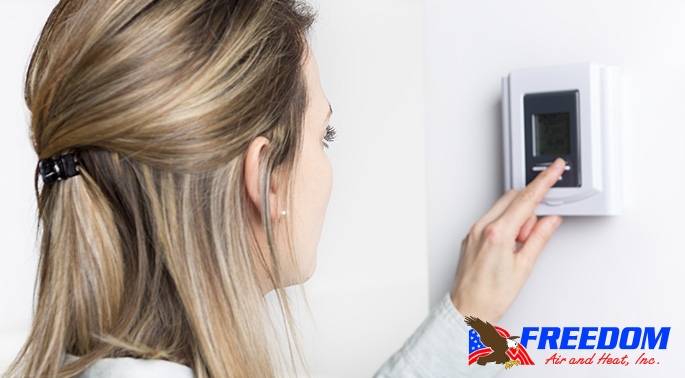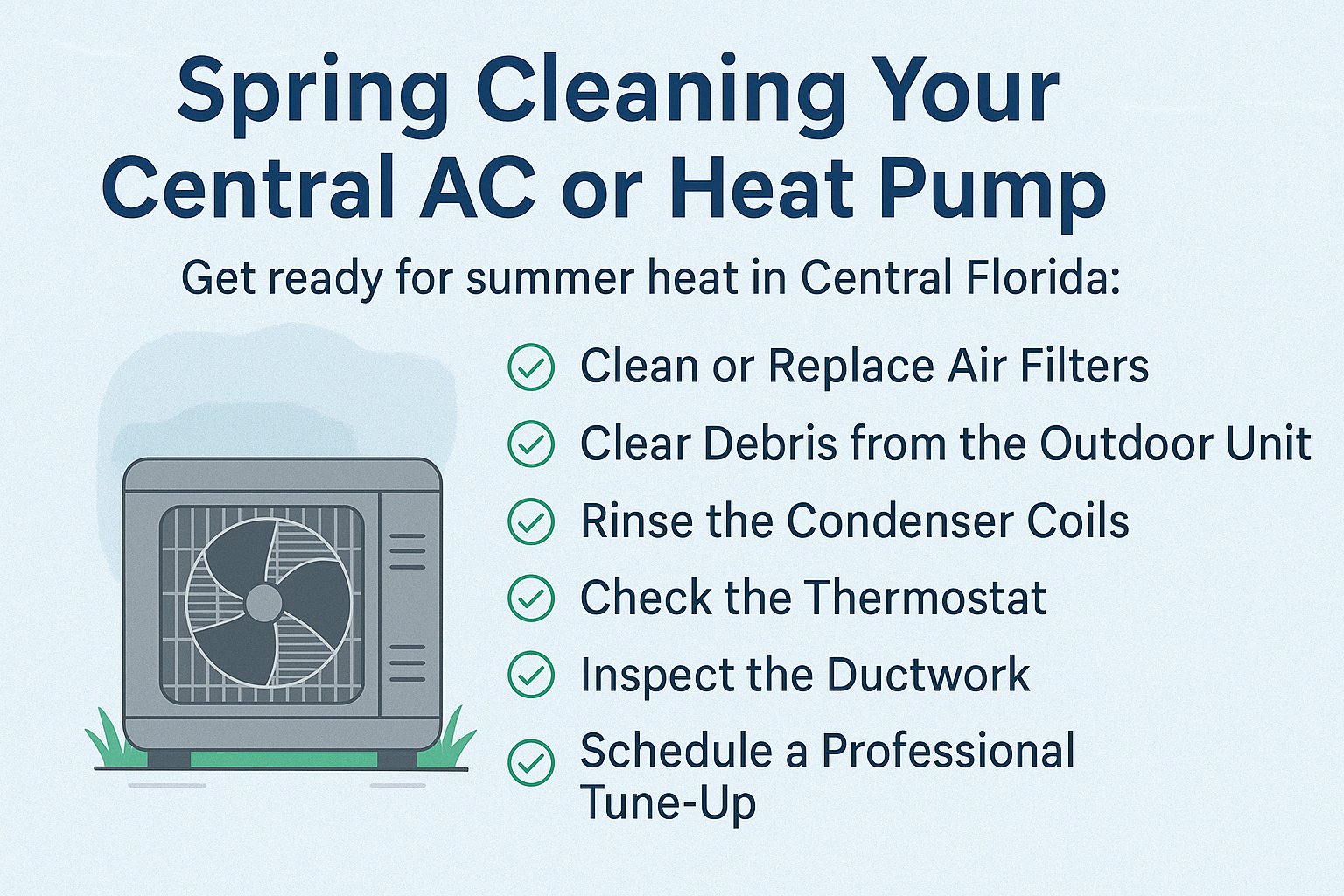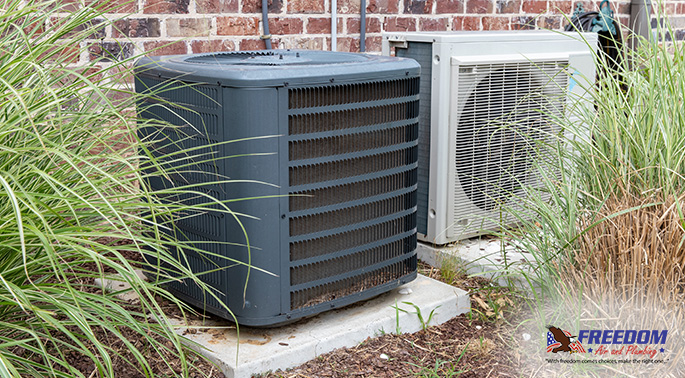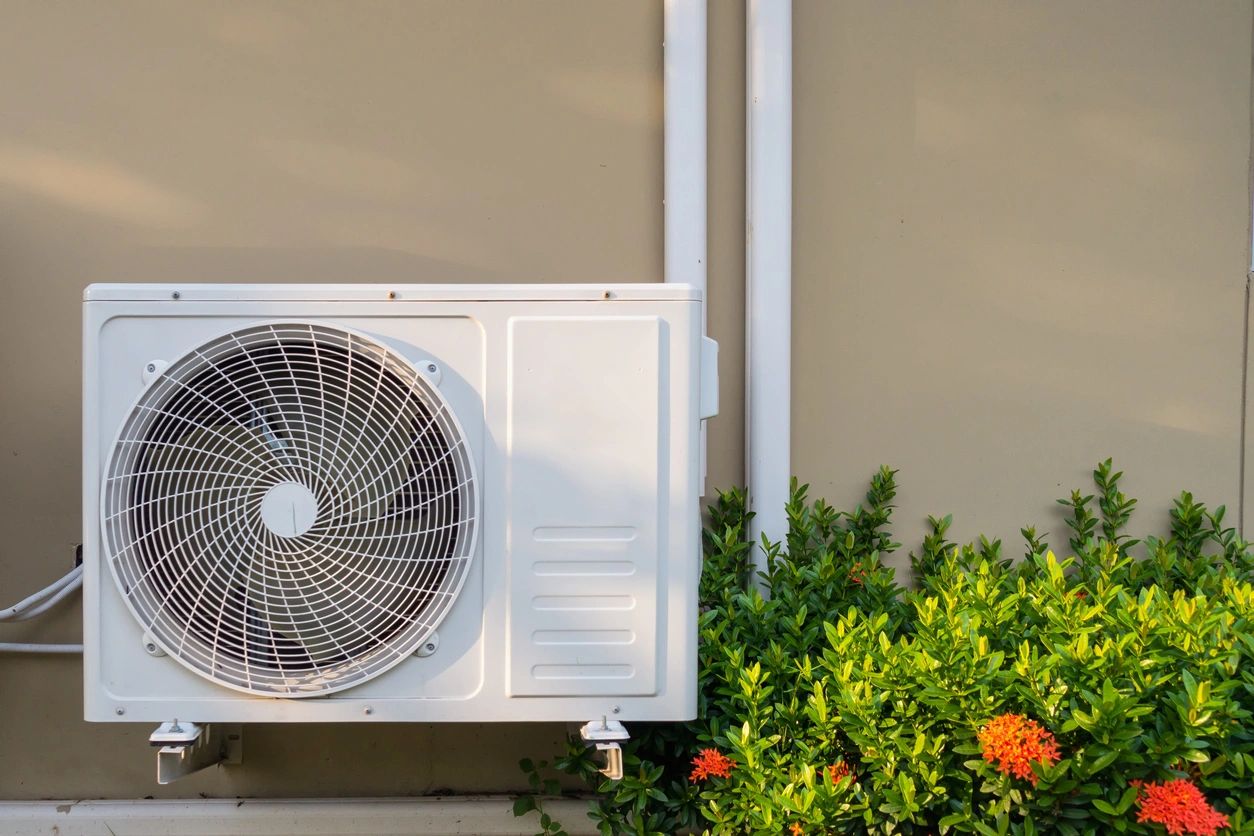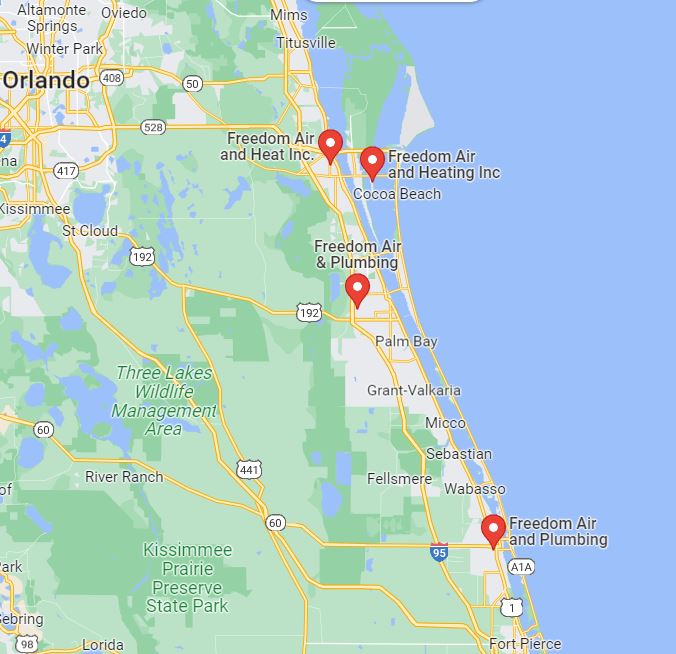It’s summer in the Sunshine State and that means everyone is looking for ways to save money on their utility bill. But most homeowners don’t know that savings are often found in their thermostat. Updating your thermostat can help you optimize the work of your HVAC unit, and save you money on heating and cooling.
The expert technicians at Freedom Air have created this step by step guide to choosing the right thermostat for your home.
Step 1. Identify what type of heating and cooling system you have
Your thermostat of choice must match your heating and cooling system. Once you have identified your system, you can begin to look for compatible thermostats.
- Single Stage – Single stage systems are the most common HVAC units. Single stage systems consist of a separate heater and air conditioning system. These systems are like an on/off switch. The furnace operates at one level and is either on or off.
- Two Stage or Multi-Stage – Unlike single stage systems, two stage systems can run at low and high levels. Multi-stage systems may also have more than one source of heating and cooling. For example, a multi-stage system might consist of a furnace to provide main heat and a solar panel as emergency heat.
- Heat Pump – Heat pumps provide both heating and cooling for your home. Heat pumps are vapor-compression refrigeration devices that can be reversed to provide either warm or cold air to your home.
- Multi-Stage Heat Pump – Multi-stage heat pumps, like traditional multi-stage systems, are supplied by multiple sources of heating and cooling. A multi-stage heat pump system typically uses the heat pump as the emergency heat supply.
- Line Voltage – Line voltage systems are common in older homes with baseboard and electric heaters. They provide 120 to 240 volts of electric current to heat your home.
Step 2. Choose the type of thermostat
- Smart/Wi-Fi Enabled – Smart thermostats offer unprecedented levels of connectivity. These devices learn your family’s needs then create an appropriate heating and cooling schedule, without manual adjustment. Most smart thermostats are Wi-Fi enabled, allowing you to adjust them remotely. Furthermore, smart thermostats can provide you with regular energy reports and tips on energy efficiency.
- Programmable – Programmable thermostats are an excellent money-saving option. These thermostats adjust the temperature of your home throughout the day and week. Programmable thermostats also enable you to manually override their settings as necessary.
- Digital Non-Programmable – Digital non-programmable thermostats are not able to independently change a home’s temperature but are outfitted with an easy-to-read LCD display.
- Manual – Manual thermostats are typically found in older homes, outfitted with simple dials, and require homeowners make all temperature changes themselves.
Step 3. Select the features that best suit your family’s lifestyle
After you have selected a thermostat that matches your heating and cooling system, as well as your family’s energy needs, consider these special features when making your final decision.
- Touch screen – Touch screens help you modify settings quicker and easier.
- Backlit panel – A backlit panel makes it easier to change the temperature at night.
- Indicator lights – Indicator lights show when the thermostat battery is low or when the furnace needs a new filter.
- Keyboard lock – If you have young children that like to play with buttons, a keyboard lock will prevent them from changing your settings.
- Vacation mode — In vacation mode, you can set your temperature for maximum energy savings while you’re away, then return to your regular settings with the touch of a button.
Need more tips on how to choose the right thermostat for your home? Call Freedom Air!
Choosing the right thermostat for your home is not an easy task. Luckily, Freedom Air is here to help. Our NATE-certified technicians serve the greater Indian River area 24 hours a day, 7 days a week. Call us today at 321-631-6886, or schedule your service online.

